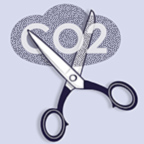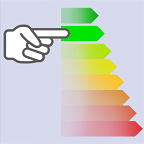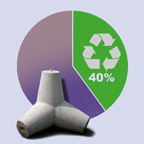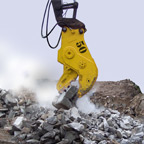
RECONSTRUCT project: new solutions to trim down the emissions of the construction sector
The objective of RECONSTRUCT is to develop circular, eco-friendly, and innovative solutions to reduce emissions from construction. Three different strategies for using less primary non-renewable materials will be tested: 1) sourcing local alternatives to conventional steel and cement; 2) using building components that not only incorporate recycled materials but are also designed for disassembly and reuse, and 3) integrating the deconstruction process into the very core of building design.

Life Cycle Analysis of recycled aggregates
The “cradle to gate” environmental impact of two recycled aggregates (gravel and graded aggregates) have been calculated according to ISO and UNE-EN reference standards and according to the PCR (Product Category Rules) applicable to construction aggregates.

Incorporation of asbestos removal tasks into ITeC’s database
ITeC's database of construction elements has been expanded with the products, machinery and operations needed for asbestos removal as per the current regulations. In addition to the dismantling of boards, tanks and ducts, it also includes inspections and sampling, negative pressure equipment, individual and collective protections, and waste encapsulation and disposal. Each of them has its price and technical specs, so prescribers can use them in the project as easily as the rest of the products of the database.

Guide for increasing the share of recycled aggregate
Since 2020, the use of recycled aggregates in public and private construction projects in Catalonia must be at least 5% by weight of the total prescription of aggregates. This guide explains how to apply this rule, how to document it and how to justify the cases where the project specificities are incompatible with the aggregates derived from construction and demolition waste.

Quantifying the potential of disassembly of a building
Measuring the future disassembly potential of buildings during the project phase allows designers to take decisions from a circular economy perspective. ITeC has developed a calculation system that, based on the construction elements of the BEDEC database that have been selected for the project, identifies the way in which they will be joined together on site and provides ‘capacity of disassembly ratio’ expressed as a percentage value.

Environmental check of the winner project in a design competition for a municipal facility
A city council has put out to tender the architectural project for a new building and wants to make sure that the winning team will meet the environmental objectives defined in the specifications, so it has appointed ITeC to supervise the design. ITeC has checked the compliance with the environmental regulations, verified the correct calculation of the environmental footprint (CO₂, energy and waste) and the compliance of the waste management plan with the specifications.

Automatic system of calculation of environmental indicators to use as references in construction projects
A public developer has been collecting the environmental ratios (energy, emissions and waste) of their latest projects. The goal is to use all this experience to benchmark the environmental performance of any given new project. The system will require the user to define the type of project in question, and it will automatically process the results obtained in the past that are relevant to produce reference ratios that suit the specific project at issue.

Addition of the "Recycled Content" parameter to the BEDEC database
The BEDEC database of construction products already informed of environmental data such as energy consumed in manufacture, CO2 emissions and packaging waste, and the next addition has been the percentage of recycled content. The purpose is to highlight those products that have been manufactured from recycled materials, as an incentive for their prescription. A distinction is made between the percentage recycled in pre-consumption and in post-consumption.

Competitive environment of a series of aggregate recycling plants
The client has a number of ongoing and planned recycling facilities and wants to evaluate which of them are located on markets with an advantageous (or disadvantageous) position in regard to the local offer of natural aggregates. A zone of influence has defined around each plant, identifying the presence of natural aggregate producers, their production volumes, product types and prices.

CaReN – Building with Null Waste
Development of a methodology to minimize the amount of construction waste that ends up rejected in landfills, following the principle of the hierarchy established by the European Directive 75/442/EEC on waste.



